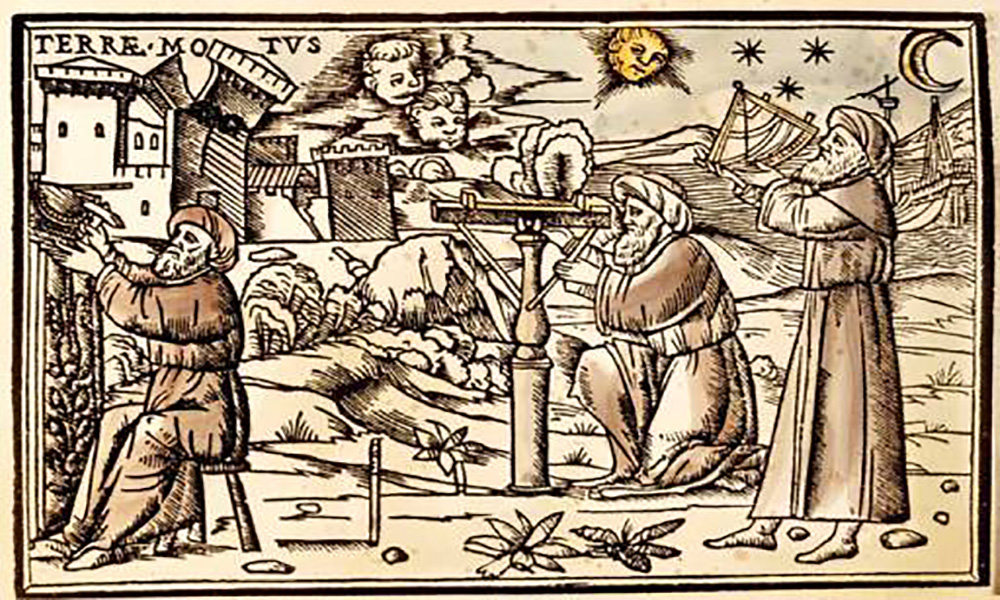In the Muslim world, whose intellectual centers in the Middle Ages were located in Damascus (Syria) and Baghdad (Iraq) and Samarkand (Uzbekistan), it was inconceivable that theologians would only deal with religious affairs. Indeed, the interpretation of the Koran required, for example, knowledge of geography and astronomy if only to orient oneself for prayer and to define the time of sunrise or sunset. All theologians therefore had knowledge of mathematics.
The Arab scholars were content first of all to translate the Greek manuscripts of Aristotle, Euclid or Ptolemy, but they then developed their own scientific culture, focusing in particular on medicine, chemistry, astronomy and physics. physics. They also took the opportunity to translate Indian texts and in the eighth century they adopted the Indian decimal system and its famous 0 (invented by the Babylonians), ten revolutionary symbols that will become our future “Arabic numerals”.
In the 9th century, when Baghdad was the capital of the Muslim empire (Abbasid caliphate of 750-1259 later transferred to Cairo), the caliphs financed the first astronomical observatories of the Islamic world through which Arab astronomers resumed their studies. by the ancient Greeks. They mentioned in table form the position of the main stars, the Milky Way and the movements of 5 wandering stars, the first 5 planets.
Regarding the instruments, the Iranian astronomer Ali Ibn Isa (Ali ibn Isa al-Asturlabi) observed the sky from Baghdad in the 9th century and made the first astrolabes (Almincantarat, in Arabic). Recall that this instrument presents in its original version two projection planes including a polar projection. It allows to measure the height of the stars and to read the time according to the position of the stars or the Sun and thus to estimate the movement of the stars on the celestial vault.
With Chalid ben Abdulmelik, in 827 Ali Ibn Isa measured the length of the terrestrial degree from which he deduced the circumference of the Earth, obtaining according to the sources the value of 40248 km or 41436 km (very close to the current value of 40075 km) .
Arab astronomers also discussed the place and movement of the Earth in space, with some scholars already suggesting that not only the Earth was spherical but that it was spinning around itself and around the Sun. But ultimately these proposals will not be retained.
Abu Abd Allah Muhammad Al-Battani, better known as Albategnius, whose lunar crater pays homage to him, critical of the works of Ptolemy, invented a new theory of the world, a work he named Al-Zij (the Zij, derived from Zih meaning “rope” in Middle Persian). It was a compilation of astronomical tables that were mainly used by astrologers as well as by Arab and Indian astronomers until the 15th century. The Zij published later will borrow data from Indian and Greek astronomers and will enter the constitution of Toledo Tables compiled in Spain around 1080 that European astronomers will use until the 13th century where they will be updated in the Tables alphonsines to correspond to the positions of the planets in the system of Ptolemy.
Thanks to the armillary sphere and its large interlocking circles invented by the Greek Eratosthenes in 255 BCE (its name is derived from the Latin Armilla meaning “circle” or “bracelet”) and found in China at the same time, Albategnius discovered the inclination of the plane of the ecliptic on the celestial equator (23 ° 35 ‘) and the slow precession of the equinoxes, which in turn gives the place of a polar star to different stars. The celestial surveys he carried out brought precisions which soon ruined the theory of epicenters and deference of Ptolemy.

a
Yogi
g
a
sdf
asdas
lol
hi
bb
bb